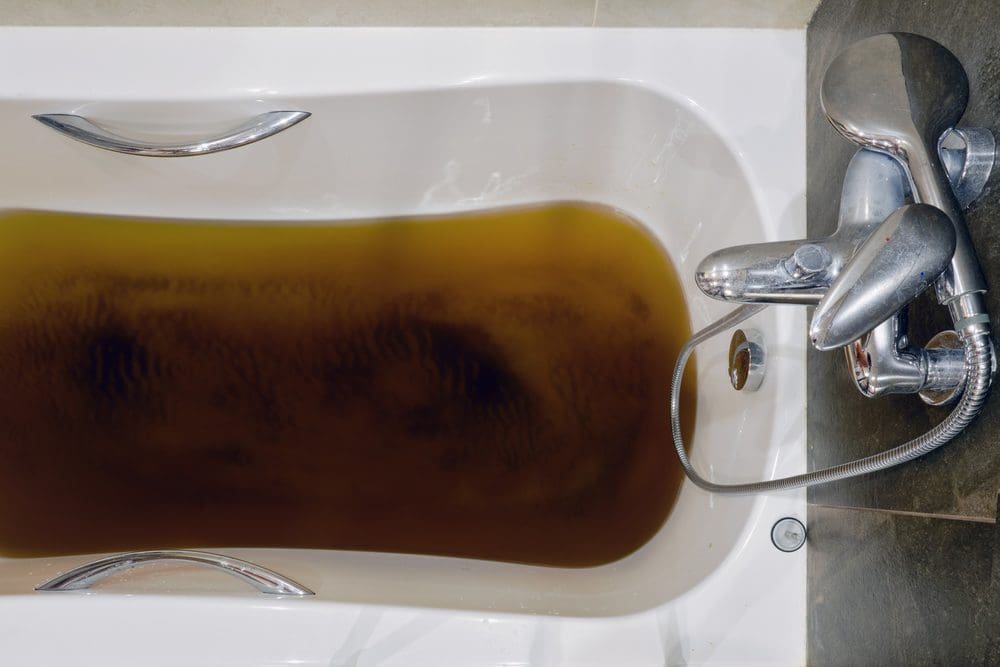Just how do you feel about What To Do If Sewage Starts Backing Up Into the Shower?

Sewer backup in the bath tub can be an upsetting and unhygienic problem for any type of home owner. Not just is it inconvenient, yet it additionally positions major health and wellness risks and indicates underlying concerns with the plumbing system. Understanding why sewer is turning up with the bath tub is critical for taking appropriate activity to attend to the issue efficiently.
Introduction to the Concern
Comprehending the Trouble
When sewage draws back up into the bathtub, it's a clear sign of an issue with the drainage system. The wastewater that needs to be moving far from your home is instead finding its way back right into your space, which can cause significant damage and health hazards.
Possible Causes
A number of elements can add to sewage back-up in the bath tub. From obstructions in the drain line to problems with the plumbing infrastructure, determining the origin is vital for locating a service.
Typical Reasons for Sewage Backup
Blockages in the Drain Line
One of the most common reasons for sewage back-up is a clog in the sewage system line. This can happen as a result of the accumulation of particles, oil, or international things in the pipes, stopping appropriate flow and creating sewer to support right into your bath tub.
Tree Origin Intrusion
Tree origins looking for moisture and nutrients can penetrate sewer lines via little cracks or joints. In time, these roots can grow and expand, creating considerable damages to the pipes and bring about sewer back-up issues.
Aging Facilities
Older homes might have obsoleted plumbing systems that are a lot more at risk to deterioration, cracks, and deterioration. As pipes age, they come to be extra prone to leaks and clogs, boosting the likelihood of sewage back-up events.
Heavy Rainfall or Flooding
During durations of heavy rainfall or flooding, the drain system might end up being overwhelmed with excess water, triggering backups and overflows. This can result in sewer supporting right into bath tubs and other fixtures inside the home.
Wellness Risks Related To Sewage Backup
Contamination of Water
Sewer backup can pollute the supply of water in your house, posing a major health risk to you and your family. Exposure to infected water can cause intestinal problems, skin infections, and various other diseases.
Spread of Illness
Sewer includes damaging germs, viruses, and bloodsuckers that can trigger a variety of diseases, including hepatitis, cholera, and gastroenteritis. Coming into contact with sewage or contaminated surfaces places you at risk of infection.
Mold and mildew Growth
Wetness from sewer backup can develop suitable conditions for mold growth in your house. Mold spores can aggravate respiratory issues and trigger allergic reactions in delicate individuals, making punctual cleaning essential.
Indications of Sewage Back-up
Foul Odors
Unpleasant odors rising from drains pipes or fixtures, specifically in the shower room, may suggest sewage backup problems. These smells are often solid and consistent, signaling an issue that requires immediate attention.
Slow Draining Fixtures
Bathtubs, sinks, and bathrooms that drain gradually or not in any way could be experiencing sewer back-up. If numerous fixtures are impacted simultaneously, it's likely that the concern originates from a common point, such as the primary sewage system line.
Gurgling Sounds
Odd gurgling or bubbling noises coming from drains pipes when water is running somewhere else in the house are indicative of air trapped in the plumbing system. This air buildup can result from sewage backup and need to be explored promptly.
Immediate Actions to Take
Shutting Off Water
In case of sewage backup, it's important to shut off the supply of water to prevent further contamination and damages. Find the major water shutoff valve in your house and shut it off until the issue can be settled.
Contacting a Professional Plumber
Dealing with sewer back-up is not a DIY work. Get in touch with a qualified plumber with experience in handling sewage-related concerns to evaluate the scenario and perform necessary repair work or cleanups.
Staying Clear Of Contact with Infected Water
Until the sewage backup is dealt with, avoid contact with contaminated water to prevent the spread of bacteria and microorganisms. Wear protective gear if you have to remain in the affected location and clean your hands extensively afterward.
Preventive Measures
Regular Maintenance of Sewage System Lines
Schedule normal inspections and upkeep of your drain lines to determine and resolve potential concerns prior to they intensify into significant issues. This can include cleaning particles, checking for tree root breach, and repairing any type of damaged pipes.
Installing Backwater Shutoffs
Think about installing bayou valves in your plumbing system to avoid sewage from flowing back into your home throughout periods of heavy rainfall or flooding. These shutoffs immediately close when water starts backing up, securing your residential property from contamination.
Appropriate Disposal of Household Waste
Avoid flushing anything apart from bathroom tissue and human waste down the toilet to stop obstructions and obstructions in the drain line. Dispose of grease, oil, and other family chemicals correctly to lessen the threat of plumbing troubles.
Cleaning Up After Sewer Backup
Disinfection Procedures
Completely disinfect and sanitize affected areas after sewer backup to eliminate hazardous germs and avoid mold and mildew development. Usage appropriate cleansing items and safety equipment to ensure safe and reliable cleanup.
Reconstruction of Influenced Locations
Fix any kind of damages to flooring, wall surfaces, or fixtures triggered by sewage back-up. Depending upon the degree of the damages, you may require to change carpeting, drywall, or various other materials to recover your home to its pre-loss problem.
Why Is Water Backing Up in My Bathtub When I Flush My Toilet?
What to do about a sewer line clog
First, don’t bother with plunging. No amount of plunging will dislodge the clog in a sewer line. The clog is too far away. Plungers are for clogs in the toilet itself, not the sewer line. Plus, the most likely causes of a sewer clog are:
- Tree roots
- Flushed toys or feminine products
- Grease buildup
Those items don’t move easily. And in the case of tree roots, the roots need to be cut out of the pipe and the pipe will need to be repaired.
You’ll need a closet auger. A closet auger is a type of plumber’s snake with a protective cover to keep from scratching the delicate porcelain toilet. If the clog is further down, you may need to remove the toilet or use one of your cleanouts to get to the clog.
We also recommend doing a video inspection of the drain to ensure that the cause of the clog has been completely removed. Otherwise, you could have the same problem again in a few days or weeks.
https://mspplumbingheatingair.com/blog/why-is-water-backing-up-in-my-bathtub-when-i-flush-my-toilet

As an avid reader on What To Do If Sewage Starts Backing Up Into the Shower, I figured sharing that piece of content was appropriate. Sharing is good. Helping people is fun. Thanks a lot for your time spent reading it.
Book
Comments on “Significant Factors Behind Sewage in the Bathtub”